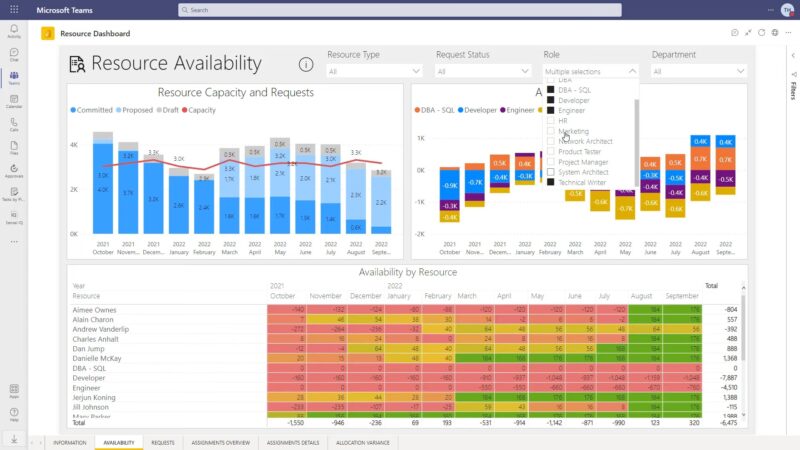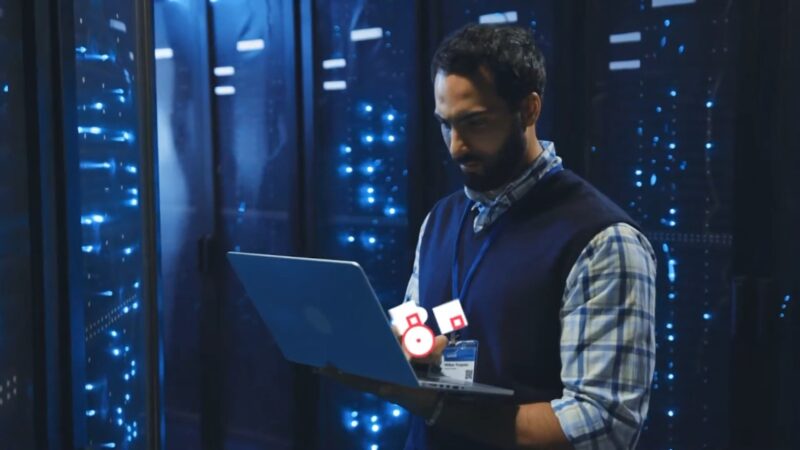National Incident Management System (NIMS) has been a pivotal framework for guiding agencies and organizations across the United States in their response to various incidents.
The backbone of this structure is a set of management characteristics that serve to standardize and improve incident management processes. In this article, we’ll discuss the intricacies of these characteristics and their implications.
Standardization and Integration
The NIMS approach emphasizes the need for a unified and standardized methodology. This isn’t about creating a one-size-fits-all solution but rather about ensuring that various teams can collaborate effectively.
Common Terminology
Using a common language ensures that every stakeholder is on the same page. This reduces confusion and makes sure that resources are allocated, and actions are taken promptly.
The Importance of Clarity
Misunderstandings can lead to inefficiencies or even jeopardize safety. By using a consistent set of terms and definitions, NIMS promotes clarity and cohesion across all responding agencies and units.
Standard Operating Procedures (SOPs)
SOPs ensure that each agency and unit knows its role and responsibilities. A common terminology underpins these procedures, facilitating easier communication and more effective collaboration.
Modular Organization
Incorporating a scalable approach allows NIMS to be effective regardless of an incident’s size or complexity.
Scalability and Flexibility
The modular organization ensures that incident management can scale up or down depending on the needs. This ensures efficient resource use and prevents overwhelming smaller incidents with too many personnel or assets.
Specialized Units
Certain situations may require specialized skills or equipment. A modular approach allows for the seamless integration of these specialized units, ensuring that every incident has the right resources at the right time.
Effective Resource Management

Central to NIMS is the concept of resource management—ensuring that the right resources are in the right place at the right time.
Inventory Systems
Maintaining a detailed inventory is essential for swift mobilization in times of need.
Tracking and Allocation
An effective inventory system ensures that resources are tracked in real-time, preventing wastage and ensuring timely deployment to incident sites.
Reducing Redundancy
By keeping a comprehensive inventory, agencies can avoid the redundancy of resources, ensuring that nothing is wasted and that resources are utilized to their fullest potential.
Personnel Qualifications and Certification
Ensuring that the personnel involved in incident management are adequately trained and certified is crucial.
Ensuring Quality
Having a certified team means that each member has gone through rigorous training and has demonstrated their expertise in their respective roles, ensuring the best possible response to an incident.
Interagency Cooperation
When different agencies know that their counterparts are also certified, it fosters trust and smoother interagency cooperation.
Effective Communication and Information Management

Without effective communication, even the most well-planned responses can falter.
Integrated Communication Systems
Having a communication system that allows all units and agencies to communicate seamlessly is paramount.
Real-time Updates
An integrated communication system ensures that all stakeholders receive updates in real time, allowing for swift decision-making and action.
Ensuring Continuity
In the face of an incident, it’s crucial that communication lines remain open. An integrated system ensures that even if one channel fails, there are backup channels to maintain continuity.
Information Analysis
Information isn’t just about collecting data—it’s about analyzing it to make informed decisions.
Informed Decision Making
By analyzing the information at hand, decision-makers can anticipate challenges, allocate resources more effectively, and strategize more efficiently.
Ongoing Assessment
The situation on the ground can change rapidly. Regular information analysis ensures that strategies are updated, and resources are reallocated as necessary, ensuring the most effective response at all times.
Plan and Establish Objectives

A forward-looking approach with clear objectives is vital to guide incident management and the subsequent actions that follow.
Planning and Preparation
Having a roadmap is essential, even when the actual incident might bring unexpected challenges.
Proactive vs Reactive
A well-thought-out plan allows agencies to be proactive rather than just reactive. By anticipating potential challenges, they can position resources more effectively and act swiftly when the time comes.
Adaptable Plans
While planning is crucial, it’s equally important for these plans to be adaptable. Circumstances can change rapidly, and plans must be malleable enough to accommodate these shifts.
Clear Objectives and Outcomes
Every action taken should be in pursuit of a clear objective.
Measurable Outcomes
Establishing clear, measurable outcomes ensures that every agency and stakeholder has a definitive end goal in mind. This clarity can guide actions and decisions, ensuring a cohesive response.
Regular Review
Objectives might need adjustments as situations evolve. Regularly reviewing and possibly revising these objectives ensures that the response remains relevant and effective.
Chain of Command and Unity of Command

Understanding who is in charge and the flow of command is paramount to preventing confusion and ensuring streamlined operations.
Hierarchical Structure
A clear hierarchical structure ensures that everyone knows their role and responsibilities.
Reducing Overlaps and Gaps
A well-defined chain of command ensures that there are no overlaps in responsibilities or gaps where no one is in charge. This structure ensures smooth operations and clear accountability.
Decision-making Efficiency
When it’s clear who has the authority to make decisions, it speeds up the decision-making process, preventing delays that could compromise the effectiveness of the response.
Unity of Command
Every individual should answer to a single supervisor.
Clear Accountability
With unity of command, there’s no confusion about who is responsible for what. This clarity ensures that tasks are completed efficiently and that any issues can be swiftly addressed.
Reducing Conflicts
When everyone knows their place in the chain of command, it reduces the potential for conflicts and disagreements, leading to a more harmonious and effective response.
Comprehensive Resource Management

A holistic view of all available resources is crucial to maximize their utility and efficiency.
Resource Prioritization
Not all resources are needed immediately or in the same quantities.
Meeting Immediate Needs
By prioritizing resources based on the immediate needs of the situation, agencies can ensure that critical requirements are met without delay.
Long-term Resource Planning
Considering the bigger picture ensures that resources are also set aside for future needs, ensuring a sustained and effective response over the duration of the incident.
Continuous Monitoring
Active monitoring ensures that resources are used effectively and adjusted as necessary.
Dynamic Resource Allocation
As situations evolve, the need for different resources might change. Continuous monitoring allows for dynamic reallocation based on the changing needs.
Avoiding Resource Exhaustion
By actively monitoring resource use, agencies can ensure that they don’t run out of critical resources, allowing for timely replenishment or reallocation as needed.
FAQs

Why Was the National Incident Management System (NIMS) Created in The First Place?
NIMS was developed after recognizing the need for a comprehensive, nationwide system to aid governmental agencies, private sector organizations, and non-profit entities in working together seamlessly during incidents.
The goal was to enhance the United States’ ability to manage domestic incidents by establishing a consistent set of processes, procedures, and best practices.
How Does NIMS Fit Within the Broader Emergency Management Framework in The U.S.?
NIMS is a part of the larger National Response Framework (NRF), which provides the strategy for how the nation as a whole responds to all types of disasters and emergencies.
While NRF sets the strategy, NIMS provides the tactical, on-the-ground set of guidelines and procedures to ensure consistent incident management.
Is the Implementation of NIMS Mandatory for All Agencies in The U.S.?
While it isn’t inherently “mandatory” for every individual agency, adopting NIMS is a condition for federal preparedness assistance, including grants.
This ensures that organizations and agencies receiving federal funding are aligned with a standardized approach to incident management, promoting nationwide consistency.
How Often Is NIMS Updated or Revised?
NIMS is periodically reviewed and updated to ensure its relevancy and applicability in the face of evolving threats, lessons learned from past incidents, and advancements in emergency management best practices.
The frequency of these updates can vary, but each revision ensures that NIMS remains an effective tool for incident management.
Can International Entities or Foreign Governments Adopt the NIMS Framework?
Yes, while NIMS was designed with U.S. agencies and organizations in mind, the principles of standardized incident management are universally applicable.
Foreign governments or international entities can study and adopt elements of NIMS that they find relevant to improve their incident response capabilities.
How Does NIMS Ensure Cultural and Community Sensitivity During Incident Responses?
NIMS places a strong emphasis on community engagement and Public Information and Warning Systems. This ensures that incident information is conveyed in a manner that’s culturally appropriate and that community-specific needs and sensitivities are considered in the response strategy.
Proper training and community outreach are essential components in ensuring this sensitivity during operations.
Final Words
The National Incident Management System’s management characteristics are instrumental in ensuring a coordinated, efficient, and effective response to incidents.
By understanding these characteristics and their underlying principles, agencies and organizations can better prepare for and handle emergencies, ensuring the best outcomes for all stakeholders.
We’ve also recently written about which organizations should be involved in communication planning, so make sure to check it out.
